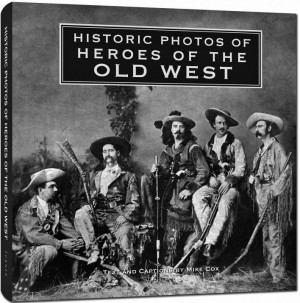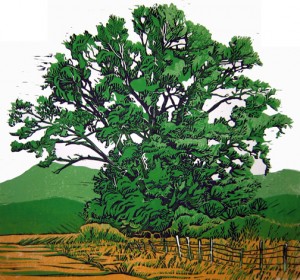by Charles F. Price
The murder of Buena Vista Policeman Tom Perkins and the fate of his killer William H. Canty made big news around Colorado. The Boulder News and Courier reported on May 14, 1880 that when the train bearing Canty to Denver reached Como, “a gang of men appeared” bent on releasing him. However, “the officers … stood their guard and declared that the prisoner should die before they gave him up” and the “would-be rescuers desisted.” Canty later made a desperate effort to escape through a car window and when prevented by officers cursed and declared “he was a highwayman and a murderer, and that he made a business of it.” If Masterson was one of those guarding Canty, the news accounts of the time fail to mention him.
Suppose he did play a leading role in the Perkins incident; it had to have been an unofficial one. The minutes of the Buena Vista Board of Trustees for April and May 1880 show no appointment of Masterson to any official position, though they do make it clear the city fathers were dealing with certain unspecified difficulties where the city police were concerned. On April 12 the newly-elected Board unanimously chose Isaac Barrett to be town marshal but on April 21 a petition was presented to the Trustees by 130 Buena Vista citizens asking that Barrett be relieved and the post of marshal declared vacant. The minutes give no reason for the request. The Board did not act on the petition and retained Barrett, but again the minutes are silent as to their reasoning. Six days later Canty killed Perkins – an event that also oddly passed unmentioned in the minutes of the Board – and on May 15 Barrett was reported “absent” and C. Watson named marshal pro tem. Nine days later, the Board appointed a Mr. Mix as permanent marshal and P.N. Foster as his deputy.
Barrett resurfaced June 26 as a leader of a mob composed of bunko men and embittered ex-policemen attempting to run police judge and former trustee John Casey out of town because they thought he had unlawfully withheld their wages from fines he had collected. Gunplay broke out, wounding three bystanders, but when Barrett and his cohorts were brought to trial before another magistrate, their charge of robbery and assault with intent to kill Casey was dismissed. It is worth noting that Barrett was later referred to by the Aspen Weekly Times as “a Buena Vista plug and desperado.”
Evidently some of Buena Vista’s troubles stemmed from the fact that at its first election in early April some of the bunko men had managed to infiltrate, if not dominate, the police force and the Board of Trustees. One correspondent of the Leadville Weekly Herald wrote: “At the recent election for city officers, a determined effort was made by the better classes to secure the control of the government, but the ‘gang’ predominated, as it usually does in frontier towns, and succeeded in getting in their own men.” He cynically characterized the Buena Vista police as men “who could not bear to see (a) man murdered by any one but themselves.”
Whether in this or some other connection, on April 27 Town Recorder L.B. Parker shot and killed Nick Morgan, a fellow member of the Board of Trustees, and at a preliminary hearing the act was ruled justifiable homicide. Later a group of citizens petitioned the Board to investigate Parker, and in August he was tried by the Board on charges that went unspecified in the minutes but probably had to do with his alleged mismanagement of the warrants that passed for currency in Buena Vista. Ex-marshal and “desperado” Ike Barrett was among those testifying against him. The Board retained Parker by a four-to-one vote, but on October 26 he resigned after the Board completed an examination of his accounts.
The disorders in Buena Vista were so severe that marshals and deputies came and went as if through a revolving door. Between April and November 1880 six men served as city marshal – two of them twice – and eleven men worked as deputies at various times. While Masterson’s name isn’t among them, this does not mean he wasn’t there when Perkins died and didn’t lend a hand. Obviously a great deal lies hidden beneath the surface of the old news accounts and Board minutes.
What happened to Policeman Perkins’ murderer? Canty was initially to be tried at Buena Vista but a change of venue sent him to Colorado Springs, and during the third week of April 1881 he was found guilty of first-degree murder. His attorneys argued in vain for a new trial and Canty was sentenced to be hanged on May 13. His lawyers appealed to the state supreme court, delaying the execution, and it was not until June 17 that he paid the supreme penalty on a Colorado Springs gallows.
Did Bat Masterson help arrest and transport Canty to meet his fate? It seems likely from the circumstantial evidence. Was Bat formally hired as town marshal of Buena Vista as in Fry’s account? Not in 1880. But what if he acted unofficially? If he did, those early 1880 editions of the Chaffee County Times should show it. If anyone out there has these old papers, the author would very much appreciate hearing from you.
In May 1882, Bat Masterson became marshal of Trinidad. Thereafter he increasingly devoted his time to gambling and the sporting life, spending several years in Denver. Eventually he moved east and became a sports reporter for the New York Telegraph. He died at his desk in 1921 while composing his column. The last words he wrote were: “(T)here are those who argue that everything breaks even in this old dump of a world of ours. I suppose these ginks who argue that way hold that because the rich man gets ice in the summer and the poor man gets it in the winter things are breaking even for both. Maybe so, but I’ll swear I can’t see it that way …”
Perhaps if Bat did step in to help in the Canty arrest, he was just trying to make sure things broke even for the beleaguered good folks of Buena Vista.
Charles F. Price is a novelist and historian living in the mountains of Western North Carolina who wishes he lived in Central Colorado. His work has appeared in this magazine on several occasions. He asks anyone who has access to the February-May 1880 issues of the Chaffee County Times to contact him at charlesfprice@aol.com.


